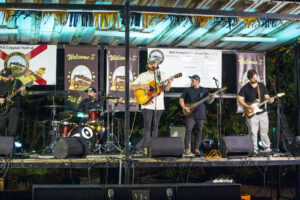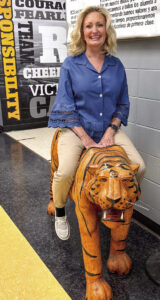Proper etiquette is necessary when flying U.S. flag
By Staff
Special to The Star
Sept. 23, 2001
Following the attacks in New York, Washington D.C. and Pennsylvania, Americans are seeking ways to publicly express a wide range of emotions as well as supporting one another.
One of the popular ways is to display the flag.
The Boy Scouts of America are promoting the flying of the American flag by providing information about flag etiquette and the proper way to display the flag.
Flying the colors
The U.S. Flag Code, adopted in 1923 and amended by Public Law 94-344 in 1976, states"It is the universal custom to display the flag only from sunrise to sunset… However, when a patriotic effect is desired, the flag my be displayed 24 hours a day if properly illuminated during the darkness."
When flags or pennants of states, cities, or societies are flown with the national flag on the same halyard, the U.S. flag should fly at the peak, above all others.
If other flags are flown from adjacent staffs, the U.S. flag should always be to the right of all others and should be hoisted first and lowered last.
Flags of other nations must be flown from separate flagpoles of equal height, and all flags should be approximately equal in size with the U.S. flag. International usage forbids the display of the flag of one nation above that of another nation in time of peace.
Displaying the Flag
When the national flag is displayed flat, either horizontally or vertically, on a wall or in a window, the union (blue field) should be at the top and to the observer's left when facing the flag.
When displayed from a staff projection from a windowsill, balcony, or the front of a building, the union (blue field) should be at the staff's peak (unless the flag is at "half staff").
The U.S. Flag Code, adopted in 1923 and amended by Public Law 94-344 in 1976, states " It is the universal custom to display the flag only from sunrise to sunset … However, when a patriotic effect is desired, the flag may be displayed 24 hours a day if properly illuminated during the darkness hours.
When displayed on a stage or platform, the national flag should be to the speaker's right. Any other flag is on the speaker's left.
When suspended, the flag should be vertical with the union to the north over east-west street and to the east over a north-south street. the flag should be hoisted out union(blue field) first.
Flag decals and stickers may be correctly displayed on the inside of motor vehicle side windows.
Flying the Flag at Half-Staff
When flown at half-staff, the flag is hoisted to the peak for an instant, then lowered to the half-staff position ( half the distance from the top to the bottom of the staff).
Before the flag is lowered for the day, it is raised again to the top, then lowered.
If the flag is on an outrigger flagpole or mounted on a wall and cannot flown at half-staff, it is appropriate to drape a purple and black mourning ribbon across the flag.
Wearing the Flag
A flag patch may be attached to such uniforms as those of athletes, fire fighters, police officers, and members of patriotic organizations. The national flag should not be used as a costume or athletic uniform.
Flag lapel pins should be worn on the left lapel near the heart.
Reproductions of the national flag in any medium such as jewelry, pins, buttons, or printed materials must show the union( blue field) on the top and to the observer's left when facing the flag.
Flag care
Be sure flags are dry before storing them.
Colors affixed to staffs should carefully furled, placed in a flag case or boot, or wrapped in plastic, then stored upright- preferably in a cool, dry, dark place.
Iron- on patches make rips and holes easy to repair. They can be bought in fabric departments in colors and various materials to match the flag. Follow the directions on the fabric package.
Outdoor flags should be correctly folded and sealed in moisture-proof and bugproof plastic bags. Store in a safe, cool, dry place.










